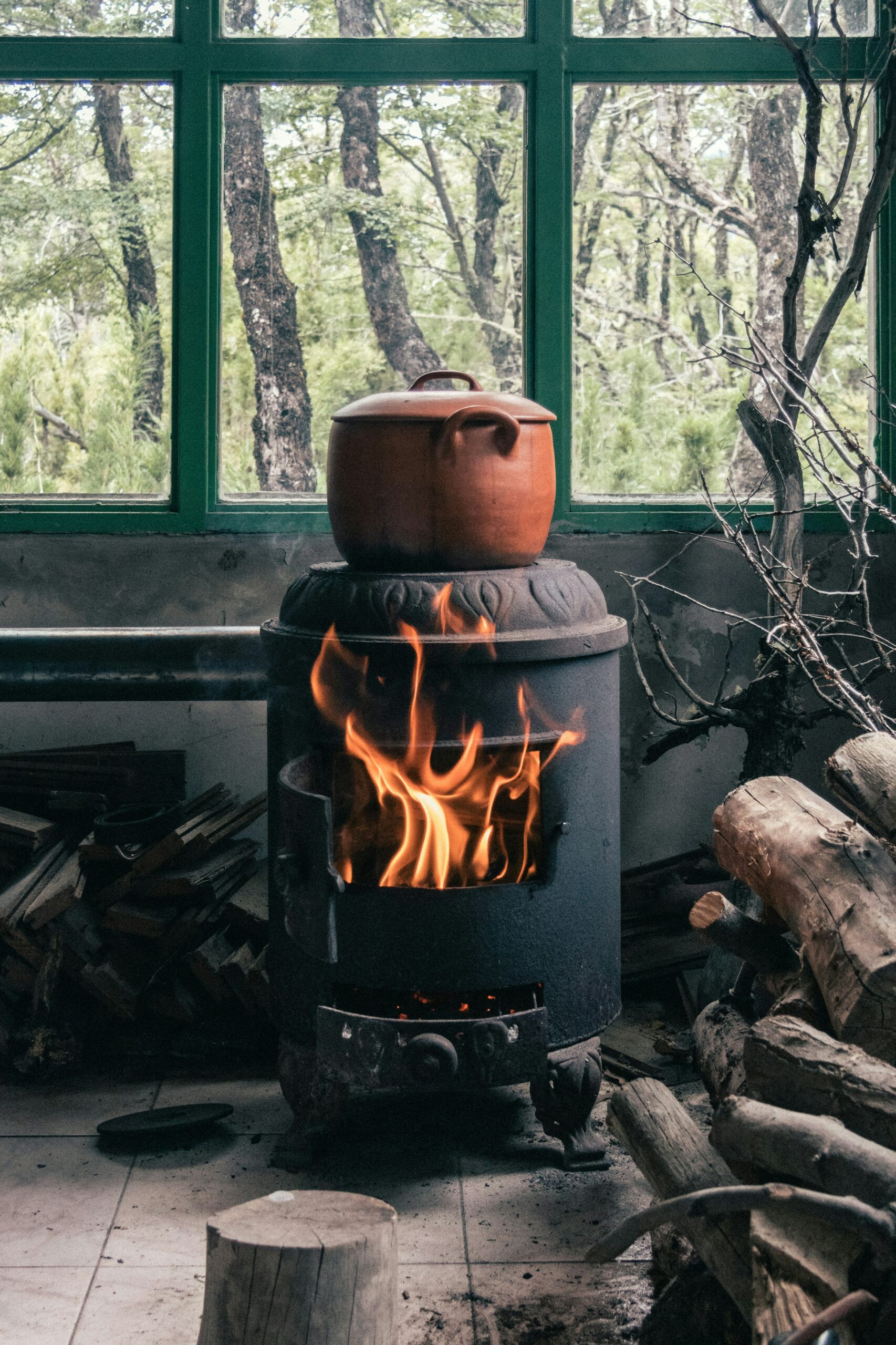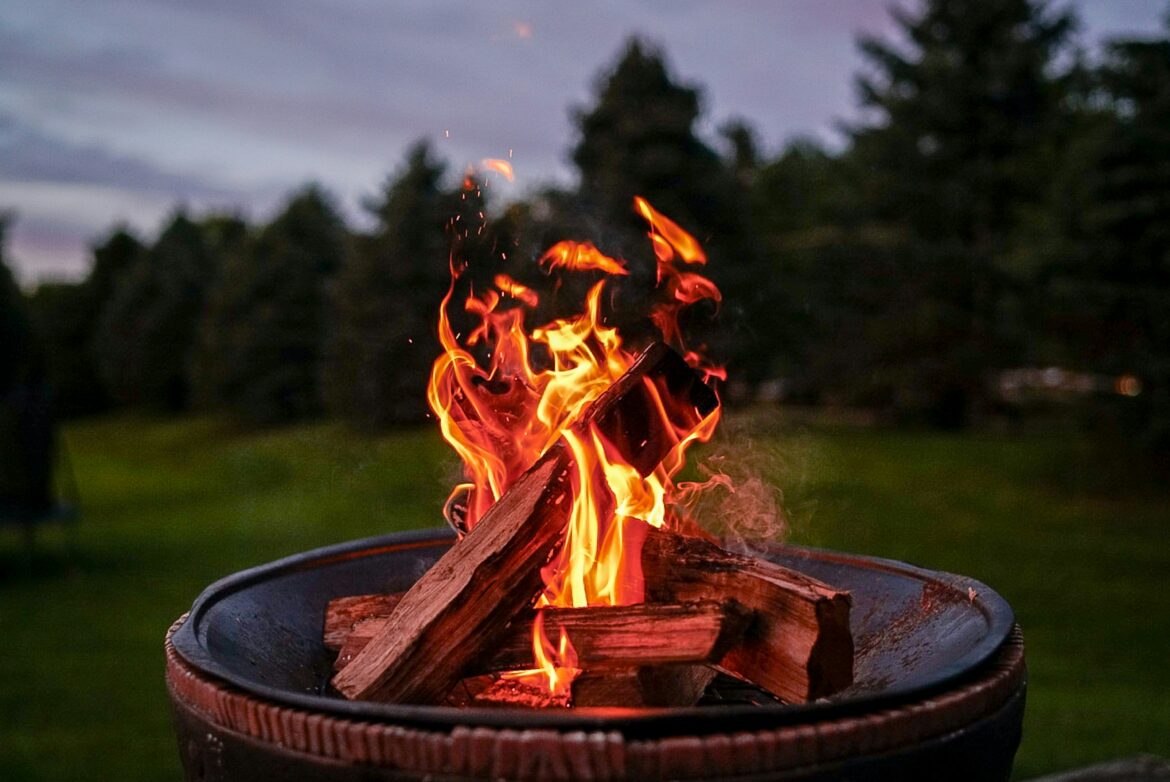Living off-grid means finding innovative ways to meet your needs without relying on conventional utilities. One of the critical aspects of off-grid living is ensuring your home stays warm, especially during the colder months. Heating your home off-grid can be challenging, but various sustainable and efficient solutions are available. In this article, we will explore different methods to keep your home warm using alternative energy sources.
1. Wood Stoves
Wood stoves are a popular and traditional method of heating off-grid homes. They offer a reliable source of heat, especially in areas where wood is abundant. Modern wood stoves are highly efficient and can heat an entire home. Some key considerations include:
- Choosing the Right Stove: Select a wood stove that is appropriately sized for your space. Larger stoves produce more heat but may be too powerful for smaller homes.
- Installation: Proper installation is crucial for safety and efficiency. Ensure the stove is installed according to manufacturer guidelines and local regulations.
- Fuel Source: Secure a reliable source of firewood. Seasoned hardwoods like oak and maple burn longer and produce more heat than softwoods.
- Maintenance: Regularly clean the stove and chimney to prevent creosote buildup, which can lead to chimney fires.

2. Rocket Mass Heaters
Rocket mass heaters are an innovative and highly efficient heating solution. They use a small amount of wood to produce a significant amount of heat, which is stored in a thermal mass (usually a bench or bed made of cob or masonry). This stored heat radiates slowly, keeping the home warm for hours. Benefits include:
- Efficiency: Rocket mass heaters can be up to 90% efficient, making them one of the most energy-efficient heating methods.
- Sustainability: They use less wood compared to traditional wood stoves, reducing your environmental impact.
- DIY Friendly: Many off-grid enthusiasts build their rocket mass heaters, which can be a rewarding and cost-effective project.
3. Solar Heating
Harnessing solar energy is an excellent way to heat your off-grid home. Solar heating systems can be passive or active:
- Passive Solar Heating: This involves designing your home to maximize natural sunlight during the winter months. Features include large south-facing windows, thermal mass (like concrete or brick) to store heat, and proper insulation to retain warmth.
- Active Solar Heating: These systems use solar collectors to capture and store heat. Liquid-based systems use water or antifreeze, which is heated by solar panels and circulated through radiators or underfloor heating systems. Air-based systems heat air, which is then distributed throughout the home.
4. Propane Heaters
Propane heaters are another option for off-grid heating. They are available in various sizes and can be used for whole-house heating or as supplemental heat sources. Key points to consider:
- Efficiency: Modern propane heaters are efficient and can provide consistent heat.
- Portability: Some propane heaters are portable, making them suitable for use in different areas of the home or for emergency heating.
- Ventilation: Ensure proper ventilation to avoid carbon monoxide buildup. Vent-free models are available but should be used with caution.
5. Hydronic Heating Systems
Hydronic heating systems use water as a heat transfer medium. These systems can be powered by various energy sources, including wood, solar, or propane. The heated water is circulated through radiators, baseboards, or underfloor heating pipes. Benefits include:
- Comfort: Hydronic systems provide consistent and even heating.
- Efficiency: They are efficient and can be integrated with renewable energy sources.
- Versatility: Hydronic systems can be used for both heating and domestic hot water.
6. Geothermal Heating
Geothermal heating systems harness the stable temperatures below the earth’s surface to heat your home. These systems consist of a ground source heat pump that transfers heat from the ground into your home. Advantages include:
- Efficiency: Geothermal systems are highly efficient and can significantly reduce heating costs.
- Sustainability: They use renewable energy from the earth, making them environmentally friendly.
- Longevity: Geothermal systems have a long lifespan and require minimal maintenance.
7. Pellet Stoves
Pellet stoves burn compressed wood or biomass pellets to produce heat. They are more automated than traditional wood stoves and can provide consistent and controllable heat. Key features:
- Efficiency: Pellet stoves are efficient and produce minimal ash and emissions.
- Convenience: They often come with hoppers that can hold enough pellets for several days, reducing the need for frequent refueling.
- Cost: While the initial cost can be higher, pellet stoves can be a cost-effective solution in the long run due to lower fuel costs.
8. Radiant Floor Heating
Radiant floor heating involves installing a system of pipes or electric heating elements beneath your floor. This method provides even and comfortable heat throughout your home. Types of radiant floor heating include:
- Hydronic Systems: Use heated water circulated through pipes.
- Electric Systems: Use electric heating cables or mats.
Benefits of radiant floor heating:
- Comfort: Provides consistent and gentle heat without the drafts or noise associated with forced-air systems.
- Efficiency: Can be very efficient, especially when used with renewable energy sources like solar or geothermal.
9. Masonry Heaters
Masonry heaters are large, built-in structures made of brick, stone, or concrete that absorb and store heat from a fire. The heat is slowly released over time, providing consistent warmth. Key points:
- Efficiency: Extremely efficient and can provide heat for up to 24 hours from a single, short burn.
- Aesthetic Appeal: Can be an attractive centerpiece in your home.
- Cost: The initial installation cost can be high, but the efficiency and durability make it a worthwhile investment.
10. Insulation and Weatherproofing
While not a heating method per se, proper insulation and weatherproofing are crucial for any off-grid heating solution. Ensuring your home is well-insulated and sealed against drafts can significantly reduce heating needs. Consider:
- Insulating Walls, Roof, and Floors: Use high-quality insulation materials to retain heat.
- Sealing Windows and Doors: Use weatherstripping and caulk to prevent drafts.
- Using Thermal Curtains: Heavy curtains can reduce heat loss through windows.
Conclusion
Heating your off-grid home efficiently and sustainably is achievable with the right combination of technology and techniques. Whether you opt for traditional wood stoves, modern rocket mass heaters, or renewable energy sources like solar and geothermal, there are numerous ways to stay warm while living off the grid. By carefully selecting and integrating these heating solutions, you can ensure a comfortable and sustainable off-grid living experience.

